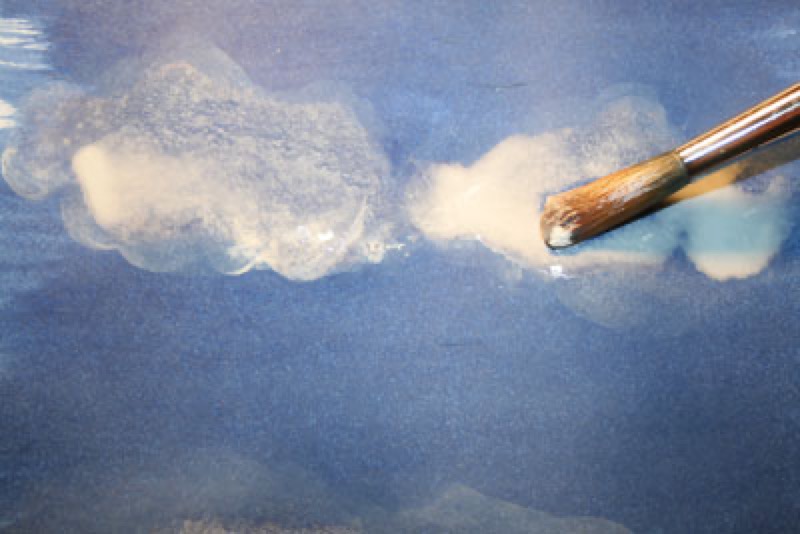Washes, impastos, "wet on wet" technique… What are they for? Learn about the basic concepts you need to get started with acrylics.

1. Wet on dry
If you apply a wet wash to dry paint, the paint will not spread and will keep its clear contours.
This technique is used to add uniformity to a painting. It also helps highlight certain details.

2. Wet on wet
When you apply a wet wash to fresh paint, both layers blend and produce irregular patterns.
This technique is hard to master but allows for magnificent effects, the charm of water-based painting.
3. Washes and glazing
A wash is color diluted with water and applied in thin, translucent layers. Each additional layer modifies the tone and shade of the previous one gradually and transparently. The wash can be solid or gradated, with one or several colors.
"Glazing" is a layer of wet color applied over a dry layer. It yields dense, very clear colors.
This is one of the techniques most often used in acrylics, because the paint has the advantage of drying very fast. Note that colors will darken as they dry, particularly if they are mixed with a lot of water.
Memo: From light to dark
A light color, when diluted with water, is translucent: it allows the previous layer to show through, but gets darker when applied over a dark color. Always start with light colors and end with dark ones to save time and paint!

4. Impastos
These are layers of paint that are so thick they retain the shape of the tool they were formed with. Impastos allow you to create reliefs and textures that draw the eye to a feature and highlight contours.
The consistency of acrylics lends itself perfectly to this technique: using paint straight from the tube, without diluting it.
5. Overlaying opaque and transparent layers
Thanks to the paint's capacity for ultra fast drying, the sky's the limit: you can add any layers of opaque and transparent paint you want.
This technique allows a subtle interplay of textures, light and transparency.
Note that an opaque layer applied over another opaque layer will completely hide it: keep that in mind when something needs fixing!
Recommended product:
Graduate Oil and Acrylic
